In Indonesia, the earliest form of Kebaya believed was originates in the court of the 15th century Javanese Majapahit Kingdom, as a means to blend the existing female kemban, torso wrap of the aristocratic women, to be more modest and acceptable. Prior to Islamic influence, Javanese already recognized several term to describe clothings, such as kulambi (clothes), sarwul (pants), and ken (kain or long fabric wrapped around the waist).
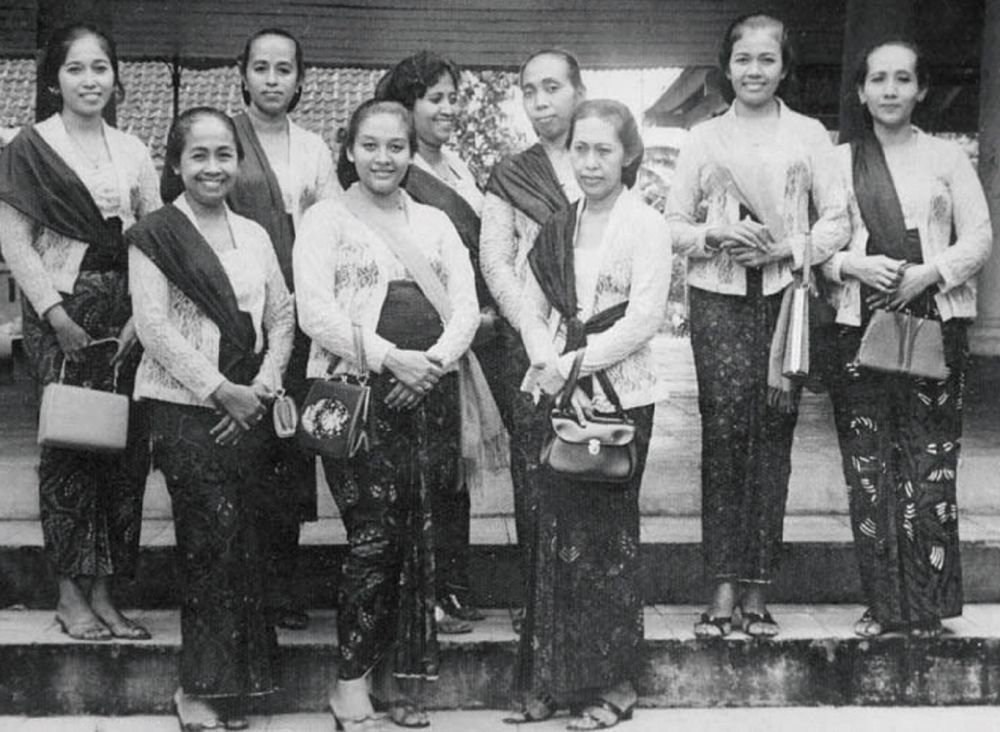
.jpg)
During the last period of Majapahit kingdom, Islamic influence began to grow in coastal Javanese towns, thus there was a need to adapt the Javanese fashion to the newly adopted Islam religion. The tailored blouse, often made from delicate sheer fabrics, were worn over kemban torso wrap to cover the back, shoulders and arms, in order for court ladies to appear more modest. Aceh, Riau and Johor Kingdoms and Northern Sumatra adopted the Javanese style kebaya as a means of social expression of status with the more alus or refined Javanese overlords.
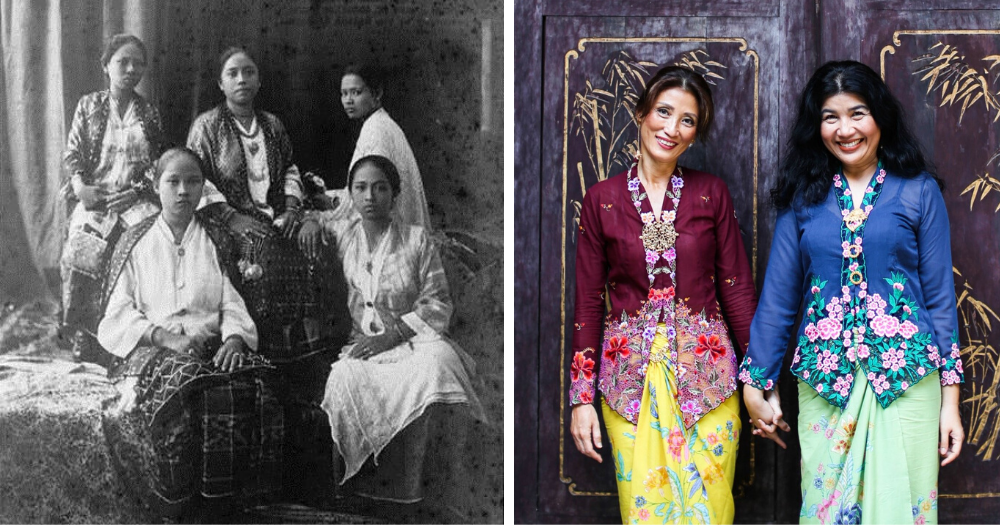

Later on, the kebaya also being adopted by commoners, the peasant women in Java. Up until this day in rural agricultural villages of Java, farmer women still uses simple kebaya, especially among elderly women. The everyday kebaya worn by peasant were of simple materials and secured with simple pin or peniti (safety pin).
The quintessential kebaya is the Javanese kebaya as known today is essentially unchanged as noted by Raffles in 1817. It consists of the blouse (kebaya) of cotton, silk, lace, brocade or velvet, with the central opening of the blouse fastened by a central brooch (kerongsang) where the flaps of the blouse meet, wore over kain.
Kebaya blouse
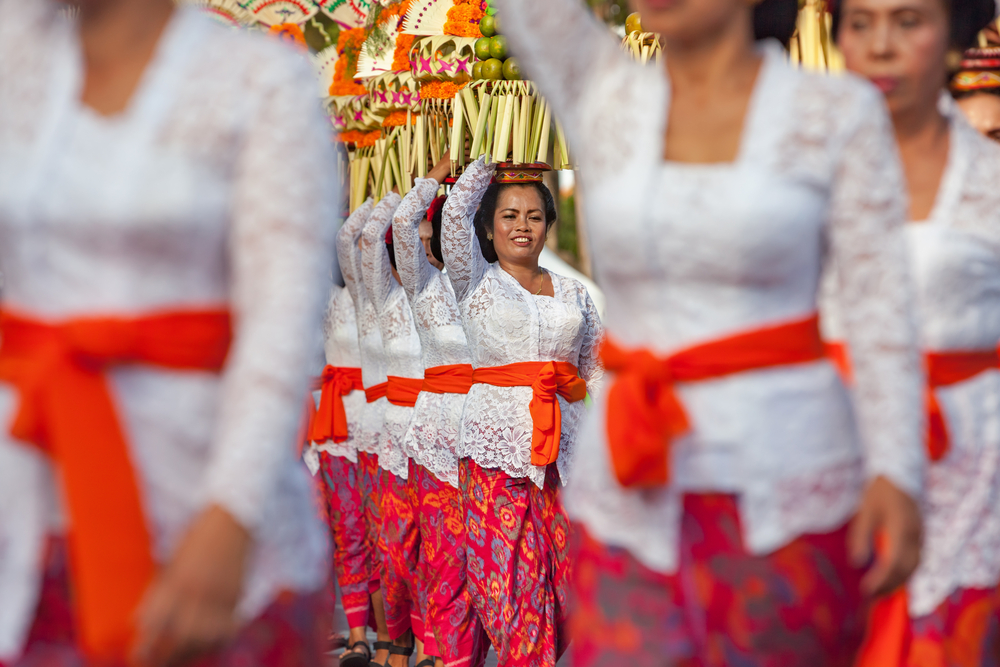
.jpg)
The kebaya blouse is commonly semi-transparent and traditionally worn over the torso wrap or kemben. Kebaya blouse can be tailored tight-fitting or loose-fitting, made from various materials, from cotton or velvet, to fine silk, exquisite lace and brocade, decorated with stitching or glittering sequins.
Undergarments
Because many of kebaya fabrics are made of fine, sheer and semi-transparent materials, there is a need to wear undergarments beneath to cover the breasts for modesty purpose. Traditionally, Javanese women wearing kemben torso wrap beneath their kebaya. Today however, the undergarment use under kebaya usually either corset, bra or camisole with matching colour. The more simple and modest undergarment wore by common village women, usually elderly women, is called kutang, which is a bra-like undergarment made from cotton.
Kerongsang brooch
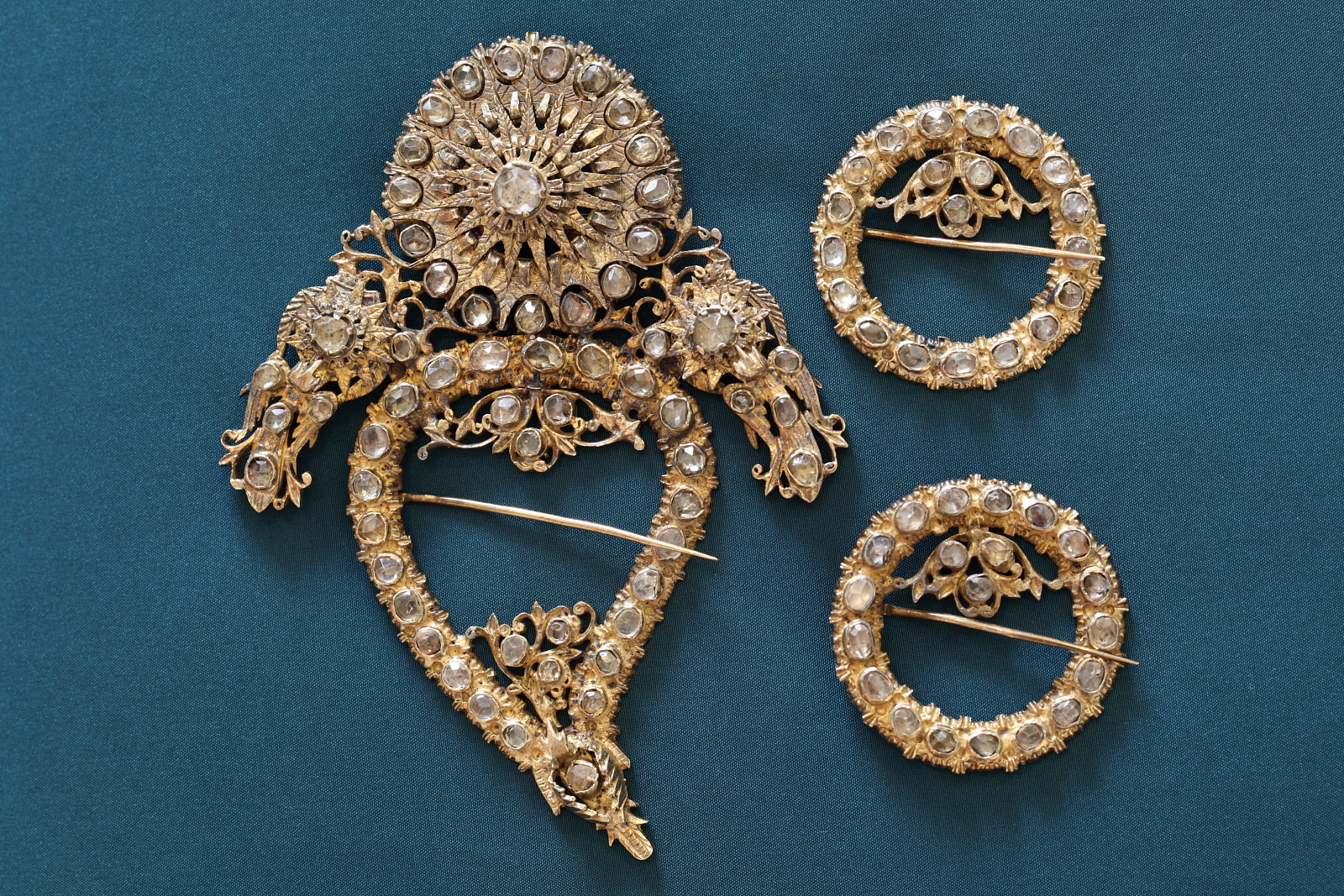

Traditional kebaya had no buttons down the front. To secure the blouse openings in the front, a decorative metal brooch is applied on the chest. It can be made from brass, iron, silver or gold, decorated with semi-precious stones. A typical three-piece kerongsang is composed of a kerongsang ibu (mother piece) that is larger and heavier than the other two kerongsang anak (child piece). Kerongsang brooch often made from gold jewelry and considered as the sign of social status of aristocracy, wealth and nobility, however for commoners and peasant women, simple and plain kebaya often only fastened with modest safety pin (peniti).
Kain sarong or skirt
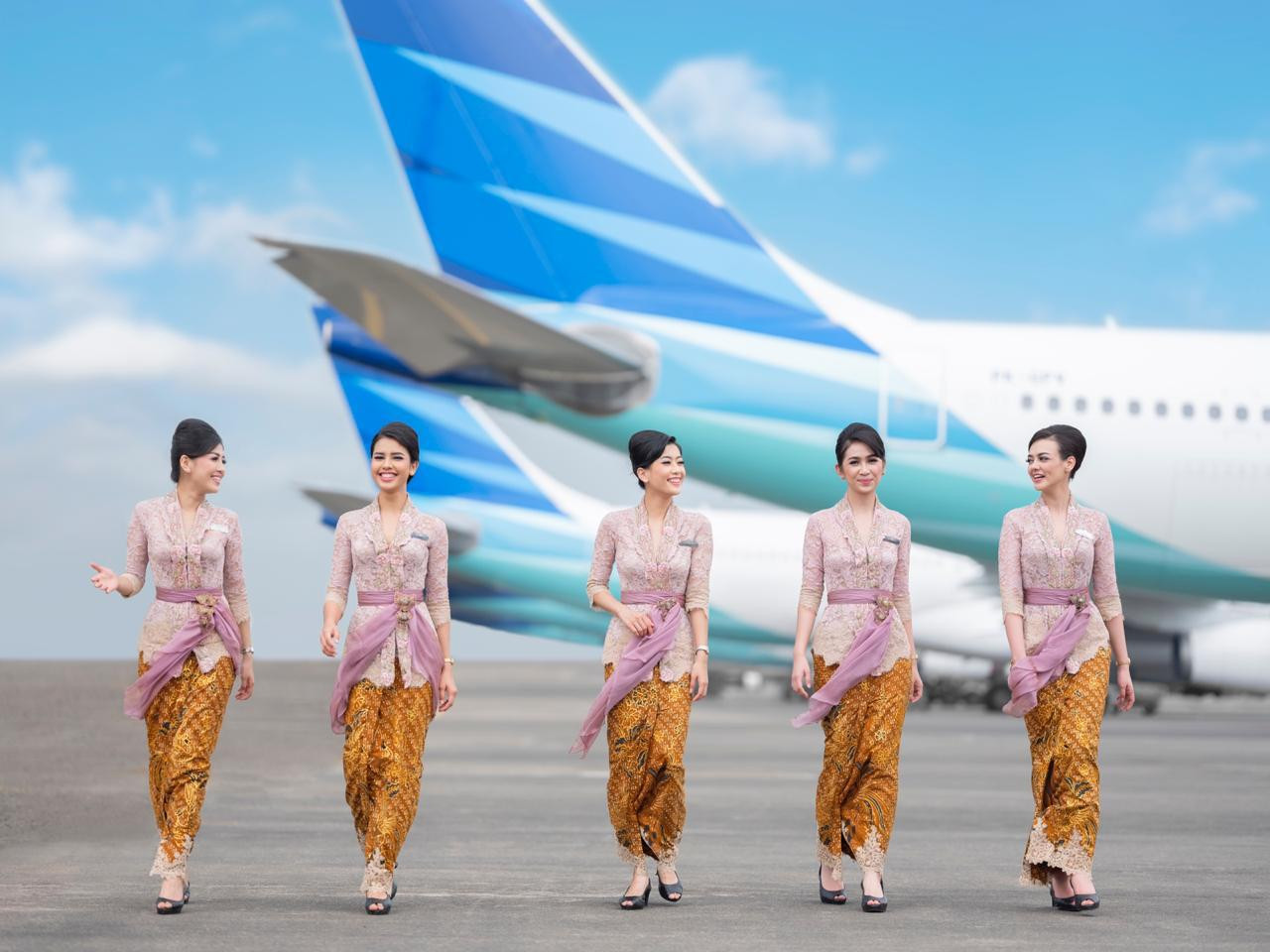

Kain is a long decorated clothes wrapped around the hips, secured with rope and wore as a kind of sarong or skirt. The skirt or kain is an unstitched fabric wrap around three metres long. The term sarong in English is erroneous, the sarung (Malaysian accent: sarong) is actually stitched together to form a tube, kain is unstitched, requires a helper to dress (literally wrap) the wearer and is held in place with a string (tali), then folded this string at the waist, then held with a belt (sabuk or ikat pinggang), which may hold a decorative pocket. In Java, Bali and Sunda, the kain is commonly batik which may be from plain stamped cotton to elaborately hand-painted batik tulis embroidered silk with gold thread. In Lampung, the kain is the traditional tapis, an elaborate gold-thread embroidered ikat with small mica discs.
According to en.wikipedia and expat.or.id














